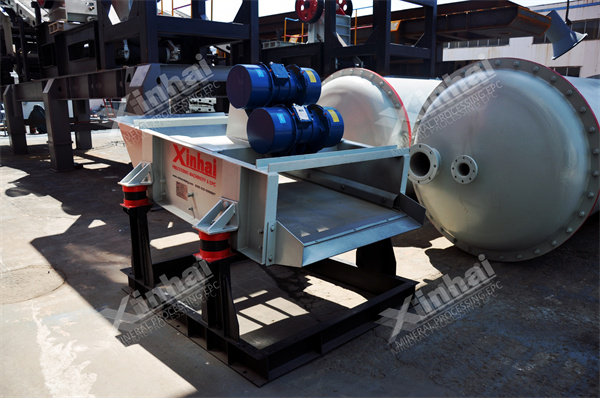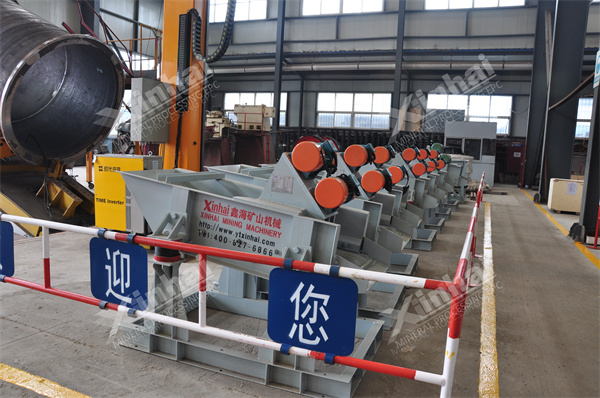In various industries ranging from mining to construction, the linear vibrating screen plays a crucial role in separating materials of different sizes and shapes. Its efficient and versatile design makes it a cornerstone of material handling processes. To understand the working principle of a linear vibrating screen, we must delve into its components, mechanisms, and applications.

A linear vibrating screen consists of several key components:
1.Screen Frame: The screen frame provides support for the screen panels and ensures the rigidity of the entire structure.
2.Screen Panels: These are the surfaces where the material is sieved. They can be made of various materials such as rubber, polyurethane, or stainless steel, depending on the application requirements.
3.Vibrator: The vibrator is responsible for generating the vibrations that facilitate the movement of the material on the screen panels. It is typically mounted on the screen frame and can be driven by electric motors or pneumatic/hydraulic systems.
4.Screening Surface: This refers to the surface area where the material is screened. It consists of multiple layers of screen panels with different mesh sizes to achieve the desired particle separation.
The working principle of a linear vibrating screen is based on the combined effect of gravity, vibration, and centrifugal forces. When the vibrating screen is in operation, the vibratory motor generates vibrations that cause the screen panels to move in a linear motion along the direction of the vibrating motor's axis.
1.Material Input: The material to be screened is fed onto the screen surface through a feed chute or conveyor. As the material moves along the screen surface, smaller particles pass through the openings in the screen panels, while larger particles are retained.
2.Vibration Generation: The vibratory motor generates high-frequency vibrations that are transmitted to the screen panels. These vibrations cause the material to be thrown upward and forward, creating a cascading motion on the screen surface.
3.Particle Separation: As the material moves along the screen surface, particles of different sizes are subjected to varying forces. Smaller particles, which can pass through the screen openings, fall through the screen panels and are collected in a discharge chute or container. Larger particles, unable to pass through the openings, are discharged at the end of the screen.
4.Efficiency Enhancement: The linear motion of the screen panels ensures efficient screening of the material. Additionally, the inclination angle of the screen surface can be adjusted to optimize the screening efficiency and throughput.

Linear vibrating screens find widespread applications in various industries, including:
1. Mining and Quarrying: Linear vibrating screens are used for grading and separating minerals and aggregates based on size and shape.
2. Construction and Demolition Waste Recycling: They are utilized to separate construction and demolition waste into different fractions for recycling and disposal.
3. Chemical Processing: Linear vibrating screens are employed in chemical plants for screening and classifying chemical powders and granules.
4. Food and Pharmaceutical Industries: They are used for sieving and grading food products, pharmaceuticals, and ingredients to ensure product quality and safety.
5. Aggregate Processing: Linear vibrating screens are crucial in aggregate processing plants for separating and classifying crushed stone, sand, and gravel.
The linear vibrating screen is a versatile and efficient screening device that plays a crucial role in material handling and processing across various industries. Its simple yet effective design, combined with the principle of vibratory motion, enables accurate particle separation and classification. Understanding its components and working principle is essential for maximizing its performance and optimizing material handling processes. Whether in mining, construction, or industrial applications, the linear vibrating screen continues to be an indispensable tool for efficient material screening and processing.